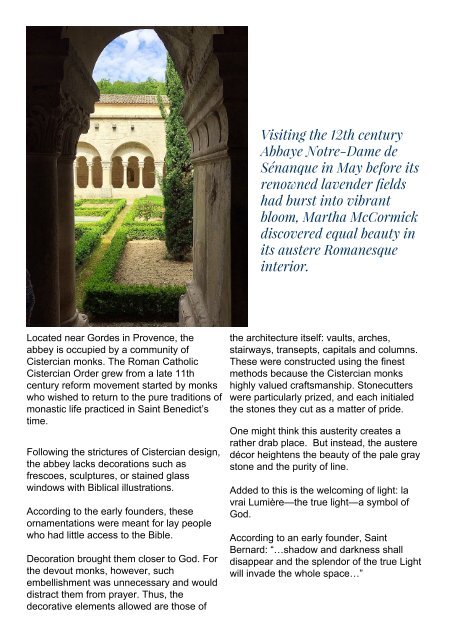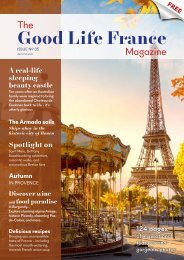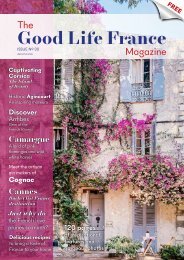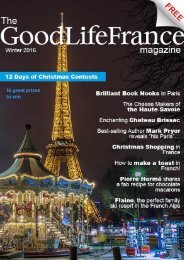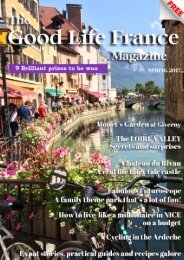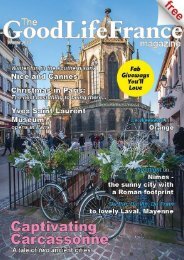Issue No. 19
Delicious sunshine cocktails and scrumptious recipes, brilliant features and tons of information and gorgeous photos to inspire your visits. The secret life of castles in Burgundy, the Abbey of Senanque in Provence, Sainte-Denis, Lourdes, Calvados in Normandy, Paris, Grenoble and more...
Delicious sunshine cocktails and scrumptious recipes, brilliant features and tons of information and gorgeous photos to inspire your visits. The secret life of castles in Burgundy, the Abbey of Senanque in Provence, Sainte-Denis, Lourdes, Calvados in Normandy, Paris, Grenoble and more...
- No tags were found...
You also want an ePaper? Increase the reach of your titles
YUMPU automatically turns print PDFs into web optimized ePapers that Google loves.
Visiting the 12th century<br />
Abbaye <strong>No</strong>tre-Dame de<br />
Sénanque in May before its<br />
renowned lavender fields<br />
had burst into vibrant<br />
bloom, Martha McCormick<br />
discovered equal beauty in<br />
its austere Romanesque<br />
interior.<br />
Located near Gordes in Provence, the<br />
abbey is occupied by a community of<br />
Cistercian monks. The Roman Catholic<br />
Cistercian Order grew from a late 11th<br />
century reform movement started by monks<br />
who wished to return to the pure traditions of<br />
monastic life practiced in Saint Benedict’s<br />
time.<br />
Following the strictures of Cistercian design,<br />
the abbey lacks decorations such as<br />
frescoes, sculptures, or stained glass<br />
windows with Biblical illustrations.<br />
According to the early founders, these<br />
ornamentations were meant for lay people<br />
who had little access to the Bible.<br />
Decoration brought them closer to God. For<br />
the devout monks, however, such<br />
embellishment was unnecessary and would<br />
distract them from prayer. Thus, the<br />
decorative elements allowed are those of<br />
the architecture itself: vaults, arches,<br />
stairways, transepts, capitals and columns.<br />
These were constructed using the finest<br />
methods because the Cistercian monks<br />
highly valued craftsmanship. Stonecutters<br />
were particularly prized, and each initialed<br />
the stones they cut as a matter of pride.<br />
One might think this austerity creates a<br />
rather drab place. But instead, the austere<br />
décor heightens the beauty of the pale gray<br />
stone and the purity of line.<br />
Added to this is the welcoming of light: la<br />
vrai Lumière—the true light—a symbol of<br />
God.<br />
According to an early founder, Saint<br />
Bernard: “…shadow and darkness shall<br />
disappear and the splendor of the true Light<br />
will invade the whole space…”


